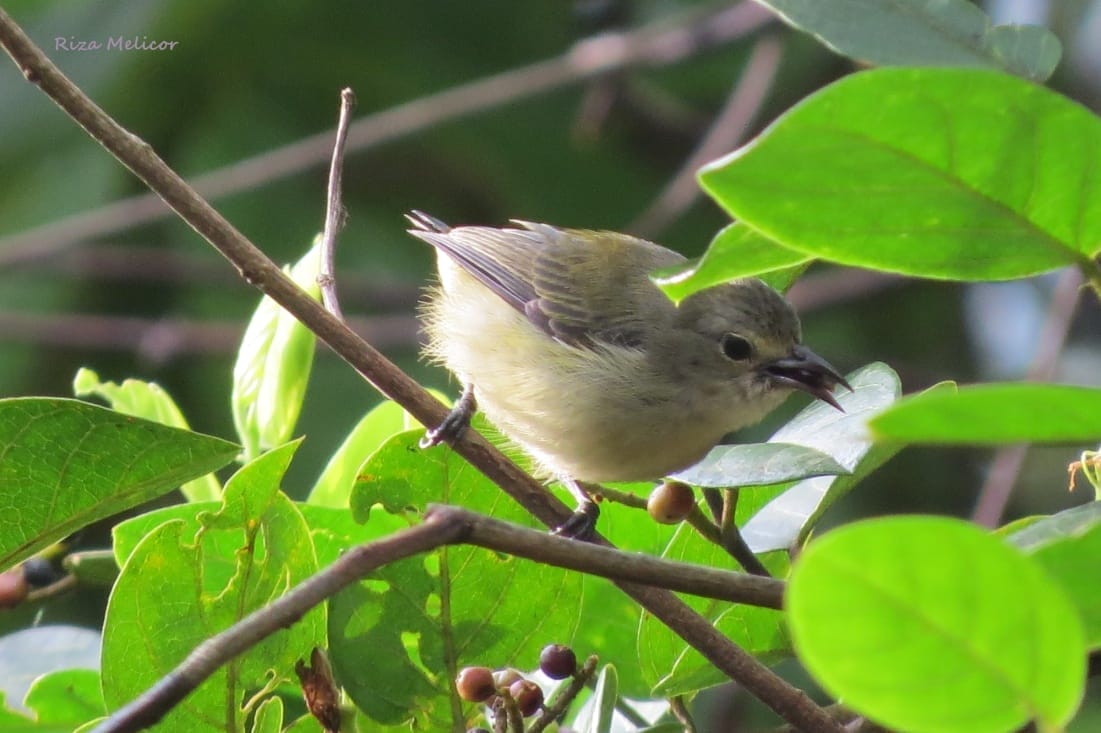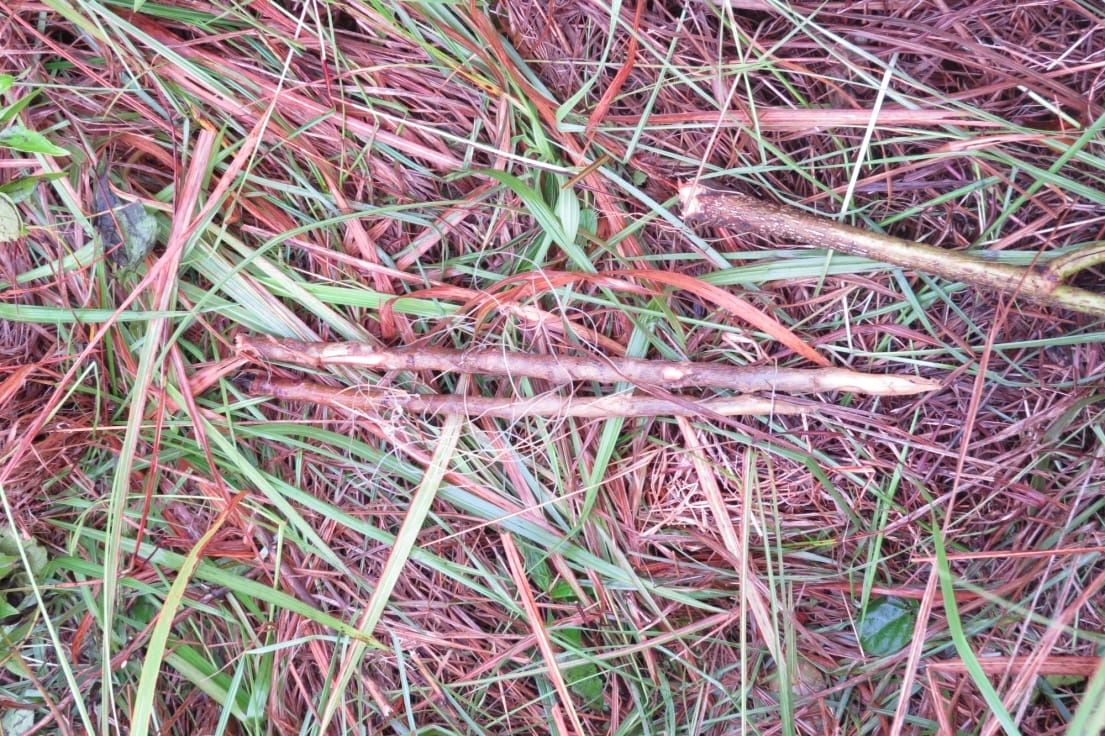by Art and Riza Melicor
It was our second day in Abra de Ilog, Mindoro Occidental, and I knew I had to climb the steep hill beyond the thick foliage behind our lodging, and see what world of mystery waited for me there. I picked up my camera hoping to find a labuyo or any lifer and get good shots of the birds I had seen the day before—a pygmy flowerpecker and a golden-headed cisticola. A few steps up the hill, I could hear the flowerpecker’s “tip-tip” from a duhat tree, but without my bins it was hard to spot it. I waited a while, hoping it would show up, but it didn’t, so I continued my labored ascent. To my dismay, right before my eyes was a cow grazing – thankfully it was tethered— and at least two more on each side of the trail. From where I stood it was hard to see how long the cows’ ropes were, being well hidden under the thick cogon grass. I am not necessarily afraid of cows, but having been once kicked disrespectfully in the thigh, producing a hoof-sized hematoma that took weeks to disappear, and then at another time also chased by a bull (and saved only by climbing up a mango tree just in time), I knew I could not dare fate again. The nearest tree was 10 meters away, with no low-lying branches, leaving me wondering how I might be able to pull myself up to safety should history decide to repeat itself. But then I had to reckon with another complication, for between me and the tree was one of the cows. That very moment the flowerpecker called again, I thought a signal for me to throw in the towel and go back downhill.

I gave a final once over of the hilltop, and the cows, when the cow in front of me moved, and then something brown and huge fluttered from under the cogon grass just a meter from the cow, as if disturbed by it. I thought it was a female “labuyo” that our hosts had been talking about, which regularly came down the hill to forage with several other junglefowl. As I’ve never seen a labuyo before, it was a chance for me to finally see one, and up close at that. I gingerly but excitedly took a few steps, careful not to provoke the cow. Seeing that the cow was in no belligerent mood, I drew nearer still to see where the cow’s peg was stuck, and calculate how safely I could approach that fluttering brown “mystery” under the grass without risking life and limb. Then it moved again, and this time I saw its green speculum (!), orange-brown head and black eye-band.

It was a Philippine Duck! The day before, my husband saw two of them flying overhead beside the rustling river near where we stayed, and a third one feeding in the rice field on the opposite side. But to be so near one was something I never even wished for. But then I thought, why would a wild duck hide under the cogon grass and not be flushed by my nearness? I moved closer and was just a meter away when it showed up again. Then I saw the nylon thread around its back. It had been trapped! It tried to flap its wings but weakly as I tried to loosen the thread, and then it lay still, perhaps too tired after trying to free itself vainly for hours already by now.

I knew I had to set this unfortunate creature at once, but then I remembered my husband. This vanishing beauty was his “spark” bird which led us to pick up birding, and to join the WBCP. He would never forgive me if he knew what I had seen on that hill top, so I decided to bring my captive to him. Walking down the hill while propping the duck’s sagging neck with my left hand and holding its gray feet with my right, I called him from halfway up the trail and thankfully he was in the cottage, as if waiting for this very moment. He was totally incredulous! With eyes agape he stroked it a bit and took a few shots and a short video for documentation, and without any further conversation we knew we had to set it free. I laid it down slowly, and as soon as I let go of its neck and feet, our duck zoomed away.

Later that night, I remembered that had seen four stakes with nylon noose traps on the hill. Early the next day, I returned to the spot, resolved to pull them all up, but I found only two, because my friend the cow intruded into my view. Not sure what mood it was in, I could not linger.

Was it pure chance that I stumbled upon our Philippine Duck, or was it a miracle? Art thinks it was a miracle of God’s playful kindness. He knew just how much Art wanted to see that bird up close. Our host had told us how a collared kingfisher had once crashed against her window and was knocked unconscious. Filled with compassion for the poor bird, our missionary-friend prayed for it to revive, and it “came back to life” and flew away. We had a good laugh fancying that her kingfisher had shared its “resurrection” experience with our duck, which was why it was totally meek and quiet the entire time I held it in my hands. Did it have that much faith for its deliverance? Art and I are awed at how the Lord delights to grant even our simple desires, yet we cannot but also grieve to have witnessed how these amazing creatures have become so vulnerable near humans, who should really be protecting them instead.
“Look at the birds in the sky! They don’t plant or harvest. They don’t even store grain in barns. Yet your Father in heaven takes care of them.” Mt. 6:26
